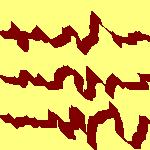
If you're looking for a good description of mind mapping, peg memory systems, and tricks to remember numbers, faces, and languages then please stop right now and think again. Real memory skills, the kind we use most days, most of the time, don't rely on tricks with visual imagery. Indeed, artificial associations should be a last resort, something we turn to only when what we have to memorize is completely devoid of any inherent order or interest.
Don't confuse your mind with bizarre and irrelevant associations. Look for the real links between things. Search for understanding. Be like Alexander Craig Aitken, the successful mathematician and memory prodigy, not like ‘S’, the dysfunctional memory man whose bizarre visualizations meant he had very little understanding of the things he could remember. If you are looking for ways to help your children at school then encourage them to use their intelligence and keep memorization by mnemonic tricks to a minimum.
If you've been looking at ideas on memory improvement for a while you will know it is helpful to develop an interest in the subject matter, to pay attention, and to look for connections between what you know and what you want to learn. In ‘Practical memory improvement’ we are going to take a much more detailed look at why these things work and exactly what to think to develop good memories.
We'll go beyond guidelines, like ‘pay attention’, and study specific patterns of thinking for directing attention effectively. For example, what should you pay attention to first? What are the best patterns of thinking for different types of material? How can memory skills be developed?
We'll also look at the powerful contribution of timing and repetition. This relies on some fundamental properties of the brain and the way memories grow and fade. It's a bit boring but it works, so keep thinking about the time you can save.
Now, on to Part I: A new focus for memory improvement.
Words © 2004 Matthew Leitch